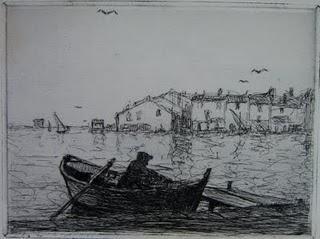 Francis Picabia, Barque et maisons sur la merEtching, c. 1907(There is a similar etching in MoMA, dated improbably to 1893)
Francis Picabia, Barque et maisons sur la merEtching, c. 1907(There is a similar etching in MoMA, dated improbably to 1893)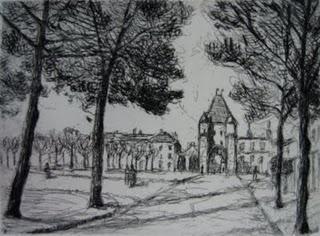 Francis Picabia, Vue de MoretEtching, c. 1907
Francis Picabia, Vue de MoretEtching, c. 1907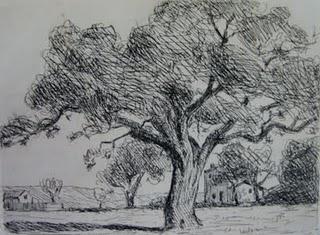 Francis Picabia, Le châtaignierEtching, c. 1907
Francis Picabia, Le châtaignierEtching, c. 1907These six exhilarating etchings provide, I think, a stunning insight into the ground of Picabia's art. Picabia was a revolutionary, but in essence he was simply carrying forward the torch lit by the Impressionists, especially Sisley (whom he knew from 1897 to the artist's death in 1898) and Camille Pissarro (whose sons Manzana and Rodo were friends of his in Montmartre). It was in Moret-sur-Loing that Picabia met Sisley and Pissarro (though he may also have met Pissarro in Martigues in 1898, certainly in 1902), and apart from the first, I believe all these etchings are scenes in Moret.
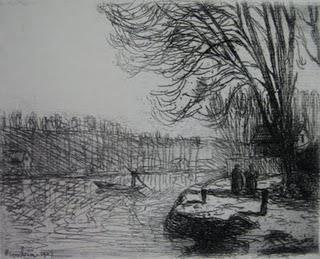 Francis Picabia, Les bords du LoingEtching, 1907
Francis Picabia, Les bords du LoingEtching, 1907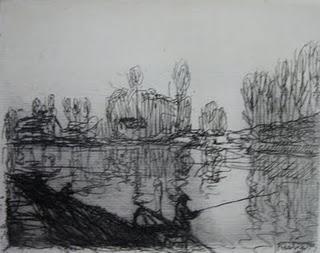 Francis Picabia, Pêcheurs sur les bords du LoingEtching, dated either 1907 or 1904
Francis Picabia, Pêcheurs sur les bords du LoingEtching, dated either 1907 or 1904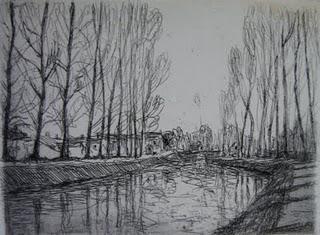 Francis Picabia, Un canalEtching, c. 1907
Francis Picabia, Un canalEtching, c. 1907Francis Picabia was born on 22 January 1879 in 82 rue des Petits Champs, Paris, and died in the same house on 30 November 1953. This might suggest a life of stasis and predictability, but in fact Francis Picabia led one of the most volatile art careers of his time. He was born François Marie Martinez Picabia, to a French mother and Spanish-Cuban father. The family was wealthy, and Picabia set about spending his inheritance with impressive zeal - he is said to have changed his car 107 times. His early enthusiasm for drawing and his natural talent were recognized in 1894 when, at the age of 16, he had a painting accepted by the Salon des Artistes Français. His family encouraged him to study art, and he entered the atelier of Fernand Cormon at the École des Beaux-Arts, and later also studied in Cormon's private atelier. He additionally studied under Wallet at the École des Arts Décoratifs, and in the Académie Humbert, where fellow-students included Georges Braque and Marie Laurencin. In 1908-1909 the revelation of Cubism may have come through Braque (though Picabia's excellent official website credits his bride-to-be Gabrielle Buffet), but from 1911 it was cemented by the Groupe de Puteaux that met in the studio of Jacques Villon, and included Villon's brother Marcel Duchamp, the poet Guillaume Apollinaire, and the painters Albert Gleizes, Jean Metzinger, Louis Marcoussis, Robert and Sonia Delaunay, and Fernand Léger.

